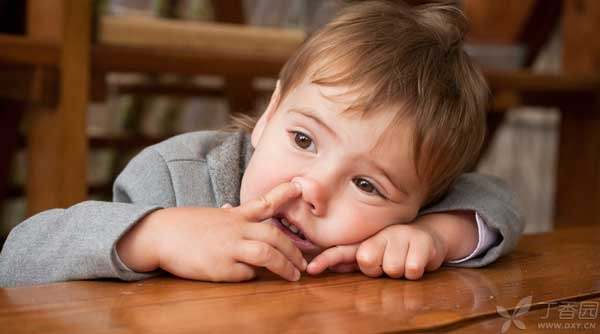
Almost every child has experienced nosebleeds. Faced with the sudden [red unknown object], children may be flustered and at a loss.
As parents, it is necessary to know what nosebleeds are, as well as hemostatic methods and preventive measures.
Why do children [love] nosebleeds?
Why did you bleed when you didn’t hit your nose or scratch it?
First of all, there are many small blood vessels (capillaries) in the nose. These small blood vessels are located in a very thin nasal mucosa, unlike other blood vessels, which are usually buried under thick skin and fat.
Secondly, children’s upper respiratory tract and immune function are not yet mature, which is prone to upper respiratory tract infection, nasal allergy, etc., thus causing epistaxis.
Therefore, when stimulated, such as picking the nose, foreign bodies in nasal cavity, dry air, etc., blood vessels are easy to rupture and bleed.
How to prevent nosebleeds?
Common causes of nosebleeds in children include dry air, nose picking and nasal allergy. Therefore, parents can prevent them from these three aspects.
Step 1 Provide humid air
Dry air can cause capillaries in the nasal cavity to rupture more easily, just as dry winter can make skin chapped more easily. In addition, in dry environment, nasal secretions and various dirty things are easy to form [nasal excrement], then children will involuntarily pick their noses.
Therefore, it is necessary to create a humid environment for your children.
- Indoor humidifier: Not only do dry winters require humidifiers, It is also needed in air-conditioned rooms in summer. Steam bath: Hot moisture softens nasal secretions, Make secretions easier to eliminate. When taking a bath, close the bathroom door and let the child inhale steam for 15 minutes under the condition of ensuring safety, killing two birds with one stone. If there is a face steamer, it is more convenient and can be inhaled at any time. Local moisturizing: If the child cooperates, you can wipe some ointment in the nasal cavity, such as Vaseline and lanolin ointment.
Step 2 Stop picking your nose
Nose picking is common in many children. Whether out of habit or itchy, it can damage the capillaries in the nasal cavity and lead to bleeding. Of course, this [indecent behavior] should be stopped even if it has no physiological effect.
If you find a child picking his nose, stop it as soon as possible. You can tell him [there are many bugs on his hand, be careful that the bugs drill his nose].
If it is an infant, it may be difficult to stop it. On the one hand, parents can try to find out the causes of nose picking, such as colds and allergies, and then give relevant treatment. On the other hand, if it is only a habitual action, then give him a toy or food to divert his attention.
Step 3 Prevent allergies
Nasal allergy is also one of the common causes of nosebleeds in children.
When the nose is allergic, capillaries are more likely to rupture and bleed, and children will pick their noses due to itching, thus causing blood vessel rupture. Therefore, prevention of allergy is particularly important.
The most important thing to prevent allergy is to [reduce exposure to allergens]. Can how keep children away from allergens?
- Installing air filters or opening windows for ventilation can usually reduce allergens in the air. Stay away from possible allergens and things that are easy to accumulate dust, such as stuffed toys, pets and plush toys.

The best plan to stop nosebleeds
When a child has nosebleeds, he may be a little flustered and at a loss. Therefore, you may need to appease him first and let him not worry [with his mother/father].
At the same time, hold the right place with your thumb and forefinger (the junction of the nose’s hard bone and cartilage is about the center of the nose side), and of course gently press the bleeding nostril. In order to prevent the nose from bleeding again, it usually takes about 10 minutes to press.
In the process of pressing and stopping bleeding, the child must lean forward slightly, not backward, not backward, not backward, so as not to cause choking cough or even suffocation due to nosebleeds flowing to the throat.
In addition, tell the child [if you feel something behind your throat, you must spit it out and not swallow it]. Some children’s epistaxis cannot be seen outside, but it may be blood flowing into your stomach, which is not easy to estimate the amount of bleeding and may delay your illness.
If simple pressing cannot stop the bleeding, knead cotton balls or paper towels into a ball about the size of nostrils, wet them with cold water, insert them into the bleeding nostrils, and then press the bleeding nose. This will cause more pressure on the bleeding point and is more conducive to stopping the bleeding.
When should what go to the hospital?
After taking the above-mentioned hemostasis measures, it is still impossible to stop bleeding, so the following diseases should be on guard.
1. Coagulation dysfunction
In addition to repeated nosebleeds, children with coagulation disorders often have the following symptoms:
- The skin is easy to bruise, even if it is not injured. It takes a long time to stop bleeding after cutting or scratching. Gums bleed easily.
2. Abnormal blood vessels in nasal cavity
If the blood vessels in the nasal cavity dilate or have other malformations, otolaryngologists are required to treat the [malformed blood vessels] to avoid bleeding.
3. Intranasal infection
If nosebleeds, pus or fever occur repeatedly, the possibility of intranasal infection should be warned.
Nosebleeds are usually a trivial matter, but they also need vigilance and prevention. When necessary, you should seek the help of a doctor so as not to delay the illness.
Responsible Editor: Hugh
This article is reprinted under the authorization of < < Sears Encyclopedia of Healthy Parenting > >, with deletions and modifications.
This article has passed the peer review of Dr. Clove’s peer review committee.
